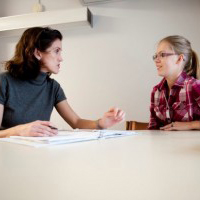“Research” What You Say: I Did Not Suffer a Stroke, I Survived One

Stroke survivor Eva Froehle reflects on the use of language in study recruitment material as she shares thoughtful insights from a research participant perspective.
Bernadette Gillick, PhD, MSPT, PT received her BS in Physical Therapy from Marquette University in 1993, her advanced masters in Neurologic PT from Rosalind Franklin School of Medicine in 1998 and completed her PhD in Rehabilitation Science with a minor in Neuroscience at the University of Minnesota in 2011. She is now a funded tenure-track Assistant Professor in the Physical Therapy Program within the University of Minnesota Medical School, and Co-Director of the Brain Plasticity Laboratory. Her lab investigates neurodevelopment after pediatric stroke through neuroimaging, neuromodulation and rehabilitation. As a lifelong learner, Dr. Gillick highly values feedback from both the children and caregivers involved in her studies. Her studies are built not only on the quantitative outcomes, but also on data amassed from family focus polls, participant feedback and tolerance assessments.

Stroke survivor Eva Froehle reflects on the use of language in study recruitment material as she shares thoughtful insights from a research participant perspective.